















































































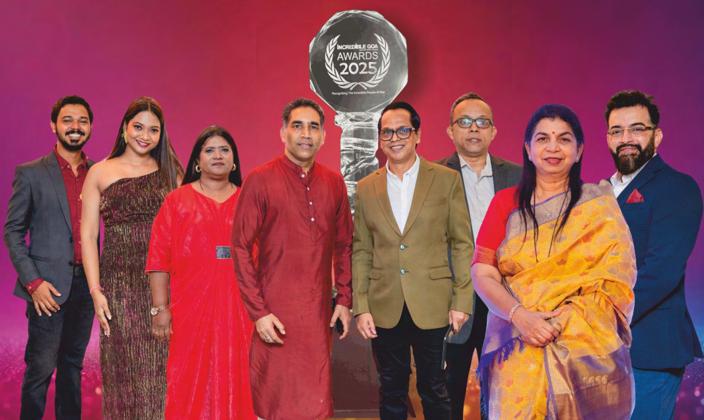




GCCI RAISES KEY INFRASTRUCTURE AND SAFETY CONCERNS WITH COLLECTOR GOA SHIPYARD LTD ACHIEVES ANOTHER MILESTONE WITH TWIN LAUNCH
GCCI WOMEN'S WING AND ROTARY CLUB OF PANAJI RIVIERA HOST 'DIWALI DIL SE' BAZAAR
ASSOCHAM GOA HOSTS AGRICULTURE CONCLAVE 2025 TO DRIVE INNOVATION
GCCI HAILS GOA'S TRANSPORT AGGREGATOR GUIDELINES AS MILESTONE IN DIGITAL MOBILITY
SVAYAM PARTNERS WITH CII TO CHAMPION INCLUSIVE TOURISM AT PURPLE FEST 2025
22 SPECIAL STORY STARS OF THE HOSPITALITY INDUSTRY The Food & Hospitality Awards
42 SUSTAINABLE GOA
THE NEW MINIMALISTS - WHY OWNING LESS IS ULTIMATE ENVIRONMENTAL ACT
THE FUTURE IS KNOCKING - ARE YOU READY TO OPEN THE DOOR TO SUSTAINIBILITY?
56 BUSINESS BUZZ
GINGER GOA, CANDOLIM AND ASIAN PAINTS REDEFINE HOSPITALITY DESIGN
GOLDEN CHANTILLY – GOA'S DESSERT SOLITAIRE
PITCH TO GET RICH TAKES OVER KOLKATA WITH “MEN IN BLACK” ACTIVATION
COLUMNS
The 6th Edition of the Incredible Goa Awards 2025 was nothing short of spectacular, marking yet another milestone in Goa's premier celebration of excellence and achievement. Held on October 12, 2025, at the luxurious Taj Cidade de Goa Heritage, the event brought together more than 250 distinguished guests from across..
TAJ CIDADE DE GOA - THE CITY'S OWN GETAWAY
60 FINANCE
58 FITNESS 10 DISCOUNTS IN GST THE TRUTH ABOUT ABDOMINAL TRAINING
62 REAL ESTATE
SOCIAL MEDIA AND THE MODERN REALTOR
64 HEALTH TIPS
KOKUM - GOA'S TANGY JEWEL SUPERFRUIT
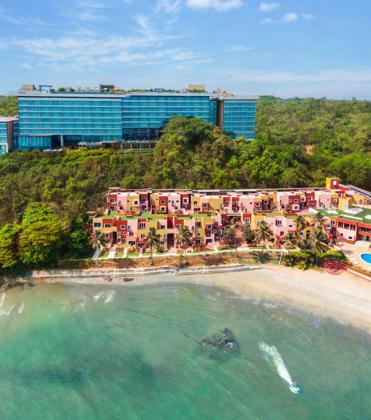



EDITOR & PUBLISHER
Rajesh Ghadge rajesh@rajeshghadge.com
FINANCE &ADMIN
Rajeshree Naik Ghadge info@gpdm.in
CONTENT WRITERS
Aditi Malhotra
Aakash Ghadge
Gauri Ghadge write@gpdm.in Maitri Kashyap
LAYOUTS & DESIGN
GPDM - A MEDIA COMPANY
info@gpdm.in
SALES & MARKETING
Anuja Purohit anuja.purohit@gpdm.in
CONTRIBUTORS
Norbert D’Souza CA Gaurav Kenkre
Prashant Kalra
write@gpdm.in
CIRCULATIONS
Aakash Ghadge subscribe@incrediblegoa.org
PHOTOGRAPHY
TEAM IG Info@gpdm.in
STOCK IMAGES www.freepik.com
Here we are, October—the month Goa dresses up, steps out, and applauds its finest. This Awards Special isn't just our photo album of a glittering night; it's a ledger ofeffort,enterprise,andthequiet stubbornness it takes to build something worthy in a small state withbigambitions.
On 12 October, at Taj Cidade de Goa Heritage, the 6th Incredible Goa Awards felt like what we always hoped they'd become: a meeting point for achievers who don't simply win trophies—they move the city forward. From women who lead and mentor, to young stars proving that talent has no age; from entrepreneurs who turn grit into brands, to technologists and sustainability champions aligning growth with conscience—the evening reminded us that recognition is not the destination; it is fuel. (The full roll of honours, partners, and faces that make this community humisinside.)
Goa makes a simple case for a complex time: owning less as an environmental act, and why susegad, properly understood, is discipline—notdrift.
/ 96651 83739 Email: info@gpdm.in
This issue stays true to our magazine's promise: celebrate what's best, examine what needs work, and keep the bridge strong between policy and people. Our In Focus pages revisit the awards nightwithcontextoverclout—why these winners matter, what their journeys say about Goa's evolving economy, and where collaboration beats competition. Hospitality Buzz steps beyond postcard luxury to spotlight service that is intimate, design that is intelligent, and properties that treat heritage as a living, breathing asset rather than a costume change. Sustainable
Our business columns do what they must in a noisy year—cut through compliance fog, decode discounts under GST without the legalese, and translate reforms into cash-flow sanity for MSMEs. Real Estate looks in the mirror: social media has democratized reach, but not expertise—buyers, choose credibility over choreography. Sport and culture round out the table—because a city that only counts profits and projectsforgetsthepointofboth. And a word on gratitude. Nights like the Awards are built by partners who show up when it counts—brands, venues, creators, and crews who lend muscle and trust to a shared stage. They were rightly honoured on the same night as our winners, because no ecosystemthrivesonsoloacts. Ten years into Incredible Goa, our job hasn't changed. Ask better questions. Listen longer. Celebrate without flattery. Critiquewithoutcynicism.Ifwe've earned your attention, it's because you—readers, advertisers, well-wishers, critics—havekeptushonest. The curtain falls on one spectacular edition so another can rise. Till then, travel light, tip generously, read deeply—and tell uswhatyouthink.Happyreading.
Rajesh Ghadge Editor rajesh@rajeshghadge.com


Rajesh’s long journey began with an early realization of his writing skills and nearly a superhuman power of vivid imagination; which together led to the birth of a successful media portal. His never-ending spree of learning has made him efficient in varied fields like coding, designing and also marketing. He fuels himself with continuous reading being a history fanatic and bouts of music and movies. Acting as a one-man army he prizes work over almost everything.
rajeshghadgeofficial
rajeshghadgeofficial
rajeshghadge
www.rajeshghadge.com
rajesh@rajeshghadge




The Goa Chamber of Commerce and Industry (GCCI) has submitted a detailed representation to Ms. Egna Cleetus, IAS, Collector and District Magistrate of South Goa, outlining several pressing issues related to infrastructure, road safety, and civic upkeep in the district.
A GCCI delegation led by Shri Chandrakant Gawas, Chairman of the GCCI Logistics Committee, called upon the district administration to take immediate action on matters affecting trade movement, commuter safety, and overallcivicwell-being.
Among the key issuesraisedwere:
Repairandreopening of the Goa–Belgaum Road via Anmod, with a special request to complete repairs on the remaining 3-km stretch near Ramnagar.
Traffic management at Verna Junction, where accidents have been rising, and deployment of dedicated traffic police was recommended.
Monitoring of heavy vehicles through stricter speed checks, improved road signage, and dedicated lanes to prevent accidents.
Structural concerns at the Old Borim Bridge and an update request on the new bridge's construction.
Establishment of Truck Termini in
North and South Goa to prevent roadsideparkingandcongestion. Improved garbage disposal along Airport Road, Railway Station Road, and national highways to curbhealthandsafetyhazards.
The Chamber also urged enhancedsafetymeasuresforthe fishing community, including vessel inspections post-monsoon, real-time weather alerts, and mock drills in coordination with authorities. GCCI further recommended official recognition for the fisherman who recently saved 27 lives during a tragicboatdrowningincident.
The South Goa Collector assured GCCI that all concerns would be reviewed and taken up with the relevant departments for timely redressal.
GCCI reaffirmed its commitment to collaborate with the administration to find practical and sustainable solutions for the region's infrastructure and public safetychallenges.

In yet another proud achievement for Goa Shipyard Limited (GSL) and the Indian Coast Guard (ICG), two state-of-the-art Fast Patrol Vessels (FPVs) — ICGS Ajit (Yard 1277) and ICGS Aparajit (Yard1278)—werelaunchedatan impressive ceremony held at GSL, VascodaGama.
The vessels were launched by Smt. Manju Sharma in the
presence of Dr. Mayank Sharma, IDAS, Financial Advisor (Defence Services), who graced the occasion as the Chief Guest.
Senior dignitaries from the Indian Coast Guard, Indian Navy, Ministry of Defence, and GSL werealsoinattendance.
These two vessels are the seventh and eighth — and final — ships in the series of eight Fast Patrol
Vessels indigenously designed and built by GSL for the Indian CoastGuardunderthe Government of India's Atmanirbhar Bharat Abhiyan. The successful completion of this FPV series underscores GSL's consistentcontribution to India's defence manufacturing ecosystem and its commitment to the MakeinIndiainitiative. Each vessel measures 52 metres in length with a displacement of 320 tonnes, and is equipped with Controllable Pitch Propellers (CPP) — the first of their kind for this class of ships in India — providing superior manoeuvrability and propulsion efficiency.
Designed to undertake a wide range of missions, the FPVs will enhance India's maritime
capability in fisheries protection, coastal surveillance, antismuggling, anti-piracy, and search & rescue operations, particularly across India's island territories and Exclusive EconomicZone.
The twin launch of ICGS Ajit and ICGS Aparajit represents yet another milestone in GSL's sixdecade legacy of excellence, reaffirming its vital role in strengthening India's maritime security and supporting the nation'sgrowingblueeconomy
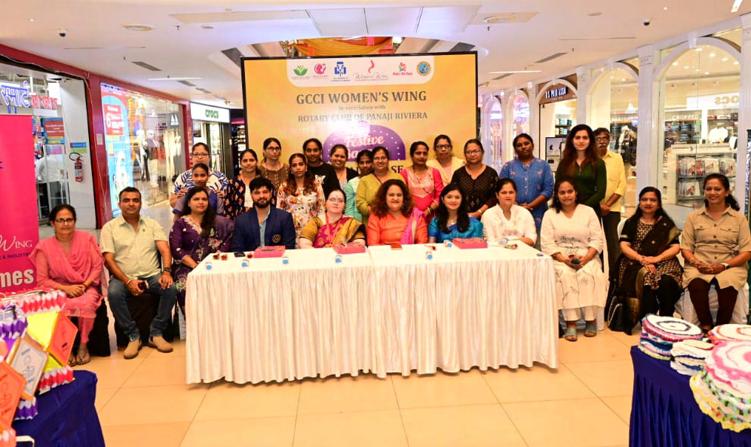
The GCCI Women's Wing, in association with the Rotary Club of Panaji Riviera, inaugurated its vibrantFestiveBazaar–“DiwaliDil Se” at Mall de Goa, Porvorim, bringing together creativity, community spirit, and festive cheer under one roof. The threedaybazaar,openfrom14thto16th October 2025, celebrates women entrepreneurship and the joy of Diwali through handcrafted products, home décor, apparel,
accessories, sweets, and festive gifting.
The bazaar was inaugurated by Ms.DeepaliNaik,ProjectDirector, DRDA (South), who lauded the initiative and encouraged women entrepreneurs to continue showcasing their talent and enterprise.
Ms. Sandra Fernandes, Chairperson of the GCCI Women's Wing, welcomed the participants and stall owners,
expressing gratitude for their enthusiasm and contribution to the event. She extended special thanks to Ms. Lavanya Shet, Member of the GCCI Women's Wing Committee, for facilitating the participation of women entrepreneurs by arranging stalls free of cost, enabling them to reach a wider audience at a premiumretailvenue.
Rtn. Jeet Tolani, President of the Rotary Club of Panaji Riviera, commended the collaboration and praised the efforts of both organizations in empowering localwomen-ledbusinesses.
The Vote of Thanks was proposed by Ms. Poonam Ajgaonkar, CoChairperson of the GCCI Women's Wing, while the proceedings were efficiently compered by Ms. Gouri Joshi, MemberoftheCommittee.
Alsopresentontheoccasionwere committee members Ms. Simran Dhond, Ms. Swatee Rane, Ms. Adbrona Valadares, Ms. Clare
Marchon, and Ms. Melane Rodrigues, along with Rtn. RoseveltValadares.
“Diwali Dil Se” successfully combined the spirit of entrepreneurship and celebration, showcasing Goa's growing network of dynamic womenentrepreneurs.


The ASSOCHAM (The Associated Chambers of Commerce & Industry of India) Goa State Council, in collaboration with Goa IDC, NABARD, and the Government of Goa, successfully organised the Agriculture Conclave 2025 on 8th October 2025 at Taj Vivanta, Panjim. The conclave focused on fostering
climate-resilient farming, technology integration, and sustainable infrastructure, while promoting agri-startups and strengthening agro-industries acrossthestate.
The event served as a dynamic platform bringing together policymakers, industry leaders, agricultural experts, and
entrepreneurs to deliberate on pressing sectoral challenges and co-create a roadmap for Goa's agriculturaltransformation.
The conclave featured thoughtprovoking sessions and panel discussions highlighting innovation, post-harvest management, and technologydriven farming. Startups and agritech enterprises shared insights on harnessing innovation forproductivityandsustainability.
Special sessions spotlighted the newly launched Goa Warehousing & Logistics Scheme, updates on the PMFME (Prime Minister Formalisation of Micro Food Processing Enterprises) Scheme, and a roundtable discussion on strengthening preand post-harvest systems from a policyperspective.
Shri Mauvin Godinho, Hon'ble Minister for Industries, Panchayat, Transport, Protocol & Legislative Affairs, Government of Goa, inaugurated the conclave as
Chief Guest and released a knowledge report jointly prepared by ASSOCHAM and Primus Partners India, titled “EmpoweringSmall-ScalePlayers in India's Food Supply Chain Can Unleash�1000Crore.”
In his address, Shri Godinho emphasised the need for innovation and technology integration in agriculture and allied sectors for sustainable growth. He encouraged stronger linkages between tourism, agriculture, and food processing industries to promote agripreneurship and community upliftment.
Distinguished speakers included Shri Arjun Mohan, IAS, Secretary to Governor, Department of Agriculture & Rural Development, Shri Sandeep Foldessai, Director of Agriculture, and Shri Sandeep Dharkar, who shared valuable perspectives on Goa's evolving agri-ecosystem and future opportunities.

The Goa Chamber of Commerce & Industry (GCCI) welcomes the Goa Transport Aggregator Guidelines 2025 as a timely and progressive step toward strengthening the state's mobility anddigitalinfrastructure.
In an era where reliability, accessibility, and digital integrationarecentraltobusiness
productivity, the availability of regulated app-based taxi services is no longer a luxury—it is acriticalnecessity.
Across key sectors—tourism, manufacturing, real estate, logistics, retail, and services—Goa's businesses depend on a workforce that requires safe, dependable, and
affordable transport options. App-based taxi services not only enhance workforce mobility but also improve the overall ease of doing business, thereby creating a more investor-friendly environmentinthestate.
The new guidelines strike a thoughtful balance between enabling digital transport innovation and safeguarding the interests of local taxi operators.
Provisions such as ensuring full government-notified fares for drivers, timely payments, vehicle subsidy support, and health insurance coverage demonstrate the government's commitment to both economic progress and socialresponsibility.
Moreover, the framework contributes to the broader goals of sustainable urban development by promoting shared mobility, reducing road congestion,andcurbingvehicular pollution—leading to a cleaner, moreefficientGoa.
GCCI urges the government to implement these guidelines in a
time-bound and transparent manner, ensuring consistency in enforcement and inclusivity in stakeholderengagement.
The Chamber calls upon aggregators, drivers, and citizens to work collectively towards building a safe, technologydriven, and equitable mobility ecosystem that aligns with Goa's vision for sustainable and inclusivegrowth. ‘


Svayam, India's leading accessibility organisation, reinforced its mission toward an Accessible Bharat through its activeparticipationatPurpleFest 2025, Goa's flagship celebration of inclusion and empowerment forpersonswithdisabilities.
As Chair of CII's India Business Disability Network, Ms. Sminu Jindal, Founder–Chairperson of
Svayam, chaired a Consultative Roundtable on Inclusive Tourism, Hospitality, and Sports, hosted jointly by the Confederation of Indian Industry (CII) and Purple Fest. The event, graced by Shri Subhash Pal Dessai, Hon'ble Minister for Social Justice, Shri Guruprasad Pawaskar, Chief Disability Commissioner of Goa, and Shri Taha Haaziq, Secretary,
Disability Commission of Goa, set thetoneforthisyear'sfestival.
The discussions brought together policymakers, industry leaders, and advocates to deliberate on creating barrier-free environments in tourism and sports — ensuring that persons with disabilities can experience travel, leisure, and adventure without constraints. Key conversations also touched upon Goa's forward-thinking initiatives to make adventure activities such as paragliding and scuba diving accessibletoall.
Speaking at the event, Ms. Sminu Jindal emphasized that accessibility is not just a social imperative but an economic priority. “Inclusive tourism and hospitality can generate massive employment in a service-driven country like India. Goa is showing the way by turning accessibility into an opportunity — building
spaces where dignity, participation, and inclusivity speak louder than policy,” she stated.
Mr. Carlos De Sousa, Convenor, Tourism, CII Goa, highlighted that awareness among business owners and sports stakeholders is crucial to making infrastructure inclusive for the differently abled, elderly, and persons with invisible disabilities.
The Purple Fest, launched in Goa in 2023, has emerged as one of India's foremost platforms promoting disability inclusion through events such as heritage walks, parasailing, and scuba diving — all designed for universal participation. Svayam's engagement reaffirmed its mission of eliminating barriers and building a society rooted in accessibility, dignity, and equal opportunity.



By Gauri Ghadge












Under a canopy of applause and anticipation, Goa's brightest gathered for a night that felt equal parts reunion, recognition, and roaring celebration. The 6th Edition of the Incredible Goa Awards 2025 opened with host Gauri Ghadge setting a gracious, high-energy tone for the evening, an ode to the achievers who turn ideas into enterprises and grit into legacies.
Founded in 2015 by Mr. Rajesh Ghadge, Incredible Goa began as the state's first and only society magazine and has since matured intoaplatformthatconnectsGoa'stalentwith the world, telling stories of women who lead, youth who inspire, entrepreneurs who build, artists who create, and visionaries who reshape the future. This edition felt like the culminationofthatmission—elegant,inclusive, andunforgettable.
The evening opened with a soul-stirring Ganesh Vandana by

Ms.ManasiSawantandMs.SayaliDivkarfrom Nidhi's School of Dance (affiliated with Akhil Bharatiya Gandharva Mahavidyalaya). It was a reverent invocation movement as prayer, grace as benediction that seamlessly transitioned the audience from welcome to wonder.
Fashion showcase curated by designer Anusha Shaikh raised the style quotient sleek silhouettes, assured attitude, and a runway that felt like a celebration of Goa's contemporary elegance. The applause simply refusedtofade.
The house was honoured by the presence of leaders who continue to shape Goa's story: Chief Guest: Hon. Shri Govind Gaude, MLA, Priol; former Minister for Sports & Art & Culture, who delivered an insightful speech enlightening the prominent guests in the house.
In a warmly received address, Mr. Rajesh Ghadge, Editor, Publisher, and


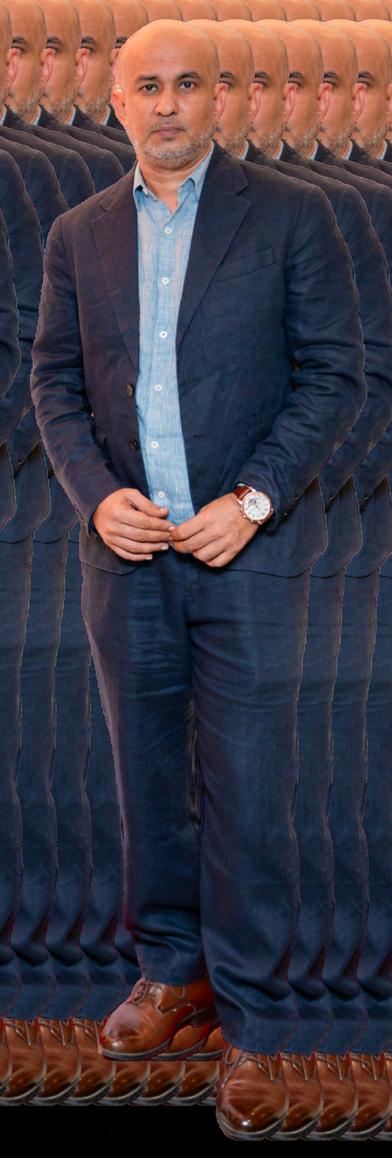
Founder of Incredible Goa reaffirmed the magazine's founding vision: to spotlight excellencewithintegrity,toconnecttheGoan diaspora, and to build a living archive of the peoplewhomakeGoaincredible.
As usual the awards began with honouring the women achievers Courage, craft, and quiet consistency defined this year's honourees women who turn challenges into momentum andsuccessintoaladderforothers.
NESCIA MARQUES: EXCELLENCE IN CAFE & CONFECTIONERYBUSINESS
From London to Santa Cruz, Nescia Marques turned a simple passion for European desserts into a thriving enterprise that has redefined Goa'scaféculture.
Withgrit,sacrifice,andanunshakablebeliefin her craft, she built her brand from scratch — trainingherteam,perfectingeveryrecipe,and winning hearts one handcrafted dessert at a time.
ANSHAVI BADIGAR: EXCELLENCE IN BODYBUILDING&FITNESS
Starting as a young athlete in Candolim, Anshavi Badigar, turned challenges into opportunities, excelling in marathons, powerlifting, and finally rising to the ultimate stageofbodybuilding.
Her relentless spirit and unwavering dedication made her the pride of India when she was crowned Miss Universe in Bodybuilding.
PALLAVI SALGAOCAR: EXCELLENCE IN WOMENENTREPRENEURSHIP
Pallavi is an accomplished entrepreneur, philanthropist, and mentor who has consistently raised the bar in business while creating space for others to grow. Pallavi Salgaocar has been a powerful voice for women entrepreneurs, fostering opportunities andbreakingbarriersacrossGoa.
Her journey is a blend of enterprise and empathy, success and service — proving that empowerment is not just about achievement, butaboutliftingothersalongtheway.
At just 12 years old, Purvi Naik has broken records, won state and national championships, and put Goa on the map with her extraordinary achievements in swimming. From freestyle to butterfly, from pools to open water,shehascollectedmedalsineverystroke and more importantly, inspired countless young athletes with her determination and discipline.
She is not just a champion in the making, she is already a champion who represents the future ofIndiansports.

EXCELLENCE IN CAFE & CONFECTIONERY BUSINESS


EXCELLENCE IN BODYBUILDING & FITNESS

EXCELLENCE IN WOMEN ENTREPRENEURSHIP


The Business Achievers Awards honour those visionaries who dared to dream big, who turned ideas into enterprises, and who continue to shape Goa's economic and sociallandscape.
These are the leaders who innovate, inspire, and prove that business is not just about profit it's about passion, resilience, and impact.
TANMAY KHOLKAR: EXCELLENCE IN CREATINGREALESTATEBRAND
From humble beginnings to building Manas Developers into a trusted name, Tanmay Kholkar's journey is one of grit, perseverance, andunwaveringbeliefinpossibilities.
His ability to turn challenges into stepping stones has not only shaped his success but alsocontributedtoGoa'sgrowingrealestate landscape.
Wehonouredtheleaderwhoprovedthattrue achievement lies in consistency, integrity, andalegacyoftrust.
Founded by Sumathy Anantharam, Anantharam Varayur And Kushal Ramesh, with vision and heart, Manasum is Goa's first dedicated senior living community — a model built on dignity, independence, and continuity. From Bengaluru to Goa, they have created not just homes, but a secure
ecosystem where seniors can live with comfort,confidence,andcare.
JERRY PINTO: EXCELLENCE IN EVENT INDUSTRYLEADERSHIP
With vision, courage, and relentless passion, he built Buzz Events into one of Goa's most trusted and celebrated names in entertainment.
From destination weddings to world-class corporate events, his work has set new benchmarks of creativity, scale, and excellence.
GREAT WHITE: EXCELLENCE IN SMART
GreatWhite has redefined the home electrical experience — blending cuttingedge technology with timeless design to create products that are not just functional, buttransformational.
From next-generation switches and lighting to smart automation and sensors, every creation reflects precision, innovation, and luxury.
Recognised globally with honours like World's Best Brand and Pride of India, GreatWhite continues to raise the bar for excellence in qualityandcraftsmanship.
CONRAD D'COSTA: REAL ESTATE
From his engineering roots to creating Conrad Homes, Conrad D'Costa has raised the bar in North Goa's real estate landscape. His projects stand as a masterclass in quality, transparency, and ambition — homes that carry not just walls and roofs, but dignity, comfort, and assurance for every family that walksthroughtheirdoors.
He is a professional whose success is measurednotonlyinthehomeshebuilds,but intheconfidenceheinspires.
KILOWOTT: BEST IT COMPANY OF THE
Foundedin2014bytheFernandezbrothers— Caleb,Aaron,andJudah—Kilowottbeganas a bold dream from Goa and today stands as a global technology powerhouse with offices acrossEurope,Asia,andtheUnitedStates. Kilowott has redefined what it means to create digital impact — blending strategy, creativity,andadvancedtechnologieslikeAI, AR, and IoT to craft business solutions that empowerindustriesworldwide.





At its heart stands Caleb Fernandez, a visionary entrepreneur whose leadership, integrity, and belief in Goan talent have transformed Kilowott into one of India's most respected IT firms proving that a company born in Goa can compete on the world stage withinnovationandheart.
EPBL - SUSTAINIBILITY COMPANY OF THE YEAR
BorninGoaandledbythevisionaryRajkumar Kamat, EP Biocomposites LIMITED stands at the forefront of India's green revolution — creating FRP products, bio-toilets, and wastewater treatment systems that combine technologywithconscience.
WithDRDO-licensedinnovationandamission rooted in environmental stewardship, the company has transformed everyday infrastructure into a symbol of sustainable progress — proving that growth and responsibilitycangohandinhand.
SANDEEP KERKAR:EXCELLENCE IN TELEVISIONBRODCASTING
With over two decades in the industry, Mr. Sandeep Kerkar has carved his place as one of Goa's most influential media minds — the youngest channel owner in the state and the

force behind groundbreaking ventures like Prime TV, Rashtra TV — Goa's first Hindi national satellite channel — and specialized platforms such as PBN Bharat, Prime Ayurved, and Purple TV Bharat, India's first channel dedicatedtopersonswithdisabilities.
From managing leading newsrooms to producing films, from mentoring young journalists to representing Goa on national and global forums, he has consistently pushed boundaries and built bridges betweenlocaltalentandglobalrecognition.
DR. SHIVANAND BANDEKAR: FOR THE LIFETIME CONTRIBUTION TO HEALTHCARE &EDUCATION
The Lifetime Achievement Award is the highesthonouroftheIncredibleGoaAwards, a recognition reserved for those remarkable individuals whose vision, dedication, and relentless pursuit of excellence have left an indeliblemarkonsociety.

Honour goes to a man whose life's work has redefined the healthcare landscape of Goa. From his early days as a surgeon to his transformative role as Dean of the Goa Medical College, Dr. Shivanand Bandekar has stood at the forefront of progress, leading with courage, compassion, and conviction.
Under his stewardship, Goa Medical College evolved into a world-class institution — expanding facilities, elevating standards of care, and restoring pride in a hospital once written off by many. His leadership during the
COVID-19 pandemic was nothing short of heroic, guiding the state through one of its most testing times with resilience and resolve.






But beyond the milestones and accolades, what truly defines Dr. Bandekar is his unwaveringcommitmenttopeople—toevery patient, every family, and every Goan who has walked through the hospital's doors with hopeintheirhearts.


EXCELLENCE IN EVENT INDUSTRY LEADERSHIP


EXCELLENCE IN SMART HOME ELECTRICAL SOLUTIONS


ESTATE CONSULTANT OF THE YEAR

By Gauri Ghadge

From fine dining restaurants to vibrant beach shacks, from luxury resorts to boutique stays, this sector has carried Goa's name across the world, offering not just meals and stays, but unforgettable experiences. It is an industry where flavours become memories, service becomes storytelling, and every plate and every welcome carries the spirit of Goa.
Behind it all are visionaries — the chefs, hoteliers, and entrepreneurs whose passion, creativity, and dedication have set new benchmarks of excellence.
We honoured those who have elevated Goa's culinary and hospitality landscape, making this state one of the world's most cherished destinations.

EXCELLENCE IN RESTAURANT CHAIN & BRAND GROWTH


GOA'S ICONIC FINE DINING DESTINATION



FISHERMANS WHARF: EXCELLENCE IN RESTAURANTCHAIN&BRANDGROWTH
From its first outlet on the banks of River Sal in 2005, The Fisherman's Wharf has grown into Goa's biggest restaurant chain delighting guests with the authentic flavors of Goan cuisine, from seafood specialties to the iconic Bebinca.
More than just a restaurant, it is a brand that carries Goa's heritage across India, with thriving outlets in Mysore, Bangalore, Hyderabad, Chennai, and beyond. It is where traditionmeetsinnovation,whereeverymealis a celebration, and where the taste of Goa travels far and wide, a true Goan original, and now, one of India's most loved multi-cuisine diningdestinations.
YACHT CLUB GOA: EXCELLENCE IN LUXURY TOURISMANDEXPERIENCES
The Yacht Club Goa is more than just a yachting service — it is the pioneer that introduced Goa to the idea of bespoke cruising and private charters, setting a new benchmark for leisure, hospitality, and innovation. With every voyage, it offers not just a journey across the sea, but an experience of elegance, comfort, and exclusivity that rivals thebestintheworld.
From creating Goa's first luxury yacht jetty to ensuringinclusivitywiththoughtfultoucheslike wheelchair-friendly access, The Yacht Club Goa has blended innovation with heart, making the joy of yachting accessible while maintaining uncompromising standards of excellence.
ALFAMA (TAJ CIDADE DE GOA):GOA'S ICONICFINEDININGDESTINATION
At Alfama, Taj Cidade de Goa, every detail, fromthewarmthofitsservicetotherichnessof its Portuguese-Goan flavours, is crafted to create an unforgettable experience. With dishes that honour tradition and evenings that comealivewiththesoul-stirringnotesofFado, Alfama is not just a dining destination, it is a stagewherefood,music,andculturemeet.
DPB - THE ROOFTOP BAR: ICONIC ROOFTOP BAROFTHEYEAR
At DPB, every detail tells a story, from breathtaking sea views and poolside cabanas to a vertical garden that inspires cocktails craftedwiththefreshestherbs.
This bar isn't just about a drink, it's about an experience — where signature creations like the Parsley Banana Vesper, the Long Island Iced Coffee, and the monsoon-inspired PurumentblendglobalcraftwithGoa'svibrant soul.
With every sip, every view, and every moment, DPB has set a new benchmark for elegance, innovation,andcelebration.
XPANSE CAFE: GOA'S HOMEGROWN BRANDOFTHEYEAR
Founded by visionary entrepreneur Sachin Rane, XPANSE is India's first fully techpowered café, where every order is placed through an app, every cup crafted by precision-driven automation, and every experience designed for convenience, quality, andinspiration.
WithoutletsinMiramar,Margao,andBelagavi, XPANSE is making premium coffee affordable and accessible, while igniting a culture of creativity and exploration. Its Arctic tern logo — a symbol of endurance and discovery, perfectly captures the brand's mission: to fuel thespiritofthosewhodaretogothedistance. It's not just a café, but as a destination that is redefiningIndia'scoffeeculture.”
TE FITI: TROPICAL FUSION CAFE OF THE YEAR
CaféTeFittiiswheretropicalinspirationmeets Goan soul — a vibrant fusion of flavours, culture,andcreativity.
From signature smash burgers and artisanal pizzas to inventive wings and desserts, every dish reflects passion, precision, and a love for localingredients.
Yet,whattrulydefinesCaféTeFittiisnotjustits food,butthefeeling—thewarmth,theenergy, and the artistry that turns every visit into an experience.
Inspired by Te Fitti, the goddess of creation, this café stands as a symbol of how food can unitepeople,sparkjoy,andcreatecommunity.
CHEF PRASAD PAUL: CULINARY ICON OF THEYEAR
With over three and a half decades of excellence across India's finest five-star kitchens, Chef Prasad Paul has not only shaped menus, he has shaped generations of chefs. A Guinness World Record holder three timesover,recipientoftheSilverHatChef,the Hall of Fame, and a Lifetime Achievement Award, his career is a testament to passion fusedwithprecision.
As the Director of Synergy Hospitality Management and the mind behind Pan Asian Hut, he continues to inspire innovation while upholdingthetimelessartofhospitality.
PLANET HOLLYWOOD BEACH RESORT GOA: BESTBEACHFRONTLUXURYRESORT
Planet Hollywood Beach Resort Goa blends Hollywood glamour with the relaxed charm of beachfront living — creating an experience where luxury feels effortless and every guest feelslikeastar.
From elegant suites and beachfront chalets to pet-friendly comfort and world-class dining, everydetailisdesignedforindulgence.
The resort's inclusive spirit, breathtaking venues, and impeccable service make it a destination for weddings, celebrations, and unforgettablegetaways.
THE PARK CALANGUTE: BEST BEACHFRONT
Where design meets the ocean breeze, The Park Calangute stands as a vision in white — a boutique haven that captures Goa's creative spirit and bohemian rhythm. Every space here tells a story from the sundrenched poolside cabanas to the open-air restaurant overlooking the Arabian Sea, servingglobalflavourswithaGoanheartbeat. It's not just a resort; it's an experience — where elegance dances with ease, where sunsets turn into celebrations, and where every stay becomes a memory painted in gold and seabluehues.
FAIRFIELD BY MARRIOTT GOA CALANGUTE: MOST POPULAR RESORT IN UPSCALE SEGMENT
Fairfield by Marriott Goa Calangute blends the warmth of Goa with the world-class standards of Marriott, offering modern elegance, heartfelt service, and a setting that celebratestherhythmofcoastallife.
From the serene poolside and the indulgent Tattva Wellness Spa, to global flavours at Kava andfamily-friendlycomfortsacrossitselegant rooms, the resort transforms every stay into an experienceofconnection,calm,andcare.
CASINO PRIDE: INCREDIBLE GAMING DESTINATIONOFTHEYEAR
Rising in brilliance over the shimmering waters oftheMandoviRiver,CasinoPrideismorethan a destination, it is an emotion and world of luxurythatneversleeps.
From its magnificent decks to its electric gaming floors, every corner reflects the grandeur of Goa's nightlife, making it a name that has turned the tides of fortune into a legacyofexcellence.
Renowned as the country's largest and most vibrantfloatingcasino,CasinoPridecontinues toredefineleisure,settingthegoldstandardin hospitality, entertainment, and world-class gamingexperiences.
KUTUMB: EXCELLENCE IN CULTURAL EVENT MANAGEMENT
For over three decades, Kutumb Events & Advertising, led by the visionary Nilesh Yeshwant Faterpekar, has been redefining the art of cultural event management — blending heritage with innovation, and passion with purpose.
From curating unforgettable live concerts featuring legends like Usha Uthup, Mahesh Kale, Amit Kumar, and Remo Fernandes, to conceptualizing the acclaimed Soul of Indian Cinema series that celebrates India's cinematic legacy — Kutumb has turned every performance into an experience, and every stageintoastory.

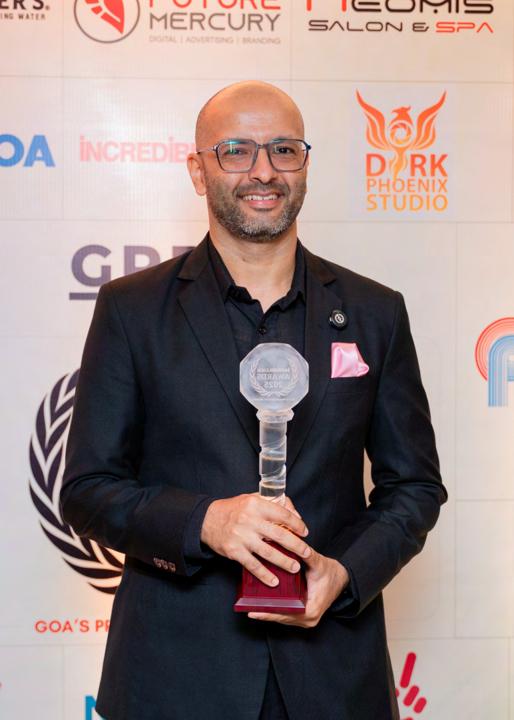




The 6th Edition of the Incredible Goa Awards 2025 was nothing short of spectacular, marking yet another milestone in Goa's premier celebration of excellence and achievement. Held on October 12, 2025, at the luxurious Taj Cidade de Goa Heritage, the event brought together more than 250 distinguished guests from across the state — an elite gathering of entrepreneurs, hoteliers, fashion icons, artists, influencers, and visionaries who have shaped Goa's vibrant identity.
The evening opened with a soulful Ganesh Vandana performed by The Nidhi School of Dance, followed by an inspiring address by Chief Guest Shri Govind Gaude, MLA of Priol and former Minister for Art & Culture and Sports. The awards honoured achievers across diverse sectors — from business and sustainability to fashion, food, and hospitality — showcasing Goa's dynamic spirit of innovation and excellence.
With glitz, glamour, and heartfelt recognition, the Incredible Goa Awards 2025 once again reaffirmed its position as Goa's most prestigious and talked-about event of the year.





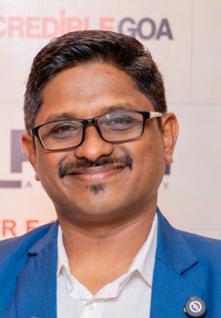







































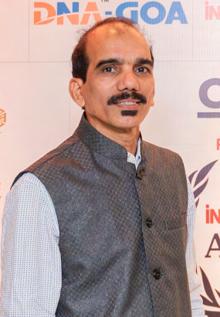


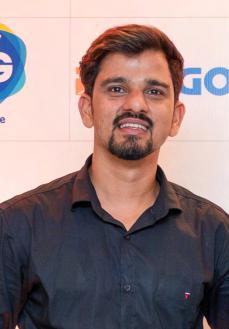
























































































































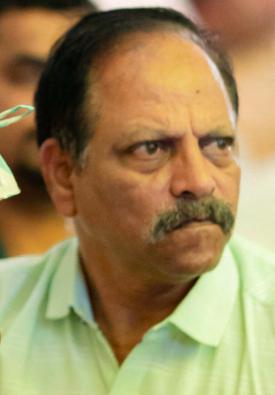
The success of the 6th Edition of the Incredible Goa Awards 2025 was not just measured by the applause, the lights, or the grandeur of the evening — it was built on the unwavering support of our sponsors and partners, whose belief in our vision made this spectacular event possible.
During the glittering ceremony held at Taj Cidade de Goa Heritage on October 12, 2025, Incredible Goa Magazine took a moment to express heartfelt gratitude to the brands, institutions, and collaborators who stood firmly behind the initiative. Each sponsor and partner was honoured on stage with a special token of appreciation for their invaluable contribution to the event's success.
From hospitality and fashion partners to media associates and corporate supporters, their involvement not only enhanced the scale of the event but also reflected their shared commitment to celebrating Goa's achievers and fostering a culture of recognition.
As we applauded the award winners of 2025, it was equally important to celebrate those who made it all possible behind the scenes. Their partnership truly exemplifies the spirit of collaboration that defines the Incredible Goa Awards — where success is















HOSPITALITYPARTNER - TAJ CIDADE DE GOA

RECEIVED BY– ANMOLPANCHOLY
BRANDING PARTNER - FUTURE MERCURY

RECEIVED BY– ANUPVOLVOIKAR
PHOTOGRAPHYPARTNER – DARK PHOENIX STUDIO

RECEIVED BY– RAJAT PRABHU
OUTDOOR PUBLICITYPARTNER -AD CITY

RECEIVED BY– ANGELO NUNES
RESOURCE PARTNER - GCHCE

RECEIVED BY– DR EDGAR D’SOUZA
CULTURALPERFORMANCE:NIDHI'SSCHOOLOFDANCE

RECEIVED BY– NIDHI SANKE

By Gauri Ghadge

There are stories that begin in a city and chase ambition; and then there are those that begin in the soil and return to it, richer, wiser, andmoregrounded.ThelifeofDr. Sharad Khot belongs to the second kind. Ayurvedic physician, farmer, biker, and photographer—he embodies a rare harmony between tradition and modernity, intellect and instinct,scienceandsoul.
Born and raised in Belgaum, Dr. Sharad Khot's story begins in the heart of a farm that still stands as the family's ancestral home. His grandmother hailed from Mapusa, Goa—his spiritual anchor—and family lore traces their ancestry to the very community that helped shift the famed Shri Mangesh Temple to its present site. Among the heirlooms discovered in the ancestral house is a time-worn watch awarded to his ancestor, Shri Mangesh Rao Khot, once a member of the Portuguese police force—a relic linkingpastandpresentwithquiet pride.
His grandfather, a respected Vaidya, was a man revered across villages. Twice a week, on Sundays and Tuesdays, people travelled miles seeking his herbal remedies. So enduring was his influence that the local bus stop still bears the name Khot Bungalow Stop. “He was an expertinherbalmedicine,”recalls Dr. Khot, “and he treated everything—from cancers to chronic ailments—with the same

compassion.”
Growing up amid medicinal herbs, early mornings, and long commutes to school instilled in young Sharad a discipline that would define his life. “Our day began at 5:30 a.m.,”hesmiles.“We'dwalkquiteadistanceto catch the 7 a.m. bus. Evenings were for farm work. Looking back, that routine taught us persistence.” His sister went on to become an Executive Vice President at Capgemini, a journeyhedescribeswithbrotherlypride.
Though medicine was in his blood, Sharad initially turned away from it. “I saw too much suffering,”headmits.“Ourparentshadnotime on Sundays; patients filled the house. I just couldn't bear seeing people in pain.” He pursued mechanical engineering instead—untilfateintervened.
Onenight,whilehisfamilywasaway,apatient of his grandfather's arrived gravely ill. With limited means—no phones, no easy help—Sharad did what he could. The next morning, when the family thanked him for saving a life, something shifted. “That moment changed everything,” he says softly. “I realised perhapsthiswasmycallingafterall.” HereturnedtoAyurveda,honouringthelegacy of his forefathers. Today, he treats a wide range of ailments—diabetic ulcers, vitiligo, digestive disorders, and chronic skin issues—while also continuing the family's farming tradition. “Being at the farm keeps me connected to Mother Nature,” he says. “It keepsmegrounded.”
For Dr. Khot, healing extends beyond patients—it lives in the soil. After his clinic hours,hespendseveningsonthetractor,often ploughing fields until midnight. “If I expect my workers to give their best, I must lead by example,” he says simply. This blend of humility
andhardworkisperhapshistruestinheritance. His grandfather's sense of service still guides him. “There was a small box in the clinic where patients would drop whatever fee they could afford,” he remembers. “Sometimes I wish I could do that today—and maybe someday I will.”
Goa, for Dr. Khot, is more than a state—it's an emotion. From his first motorcycle rides to the Mangeshi Temple, his bond with Goa deepened over the years. “The day I learnt to ride, I rode to Goa,” he laughs. “That's where my love story with this land began—along with my love for fish curry and rice, something my grandmotheringrainedinme.”
When he began his practice in Goa, fate once again smiled. “A few of my grandfather's former patients came forward to help,” he says, naming the late Shri Vishnu Surlakar of Bicholimamongthem.“Theygavemespaceto start my practice—free of cost. Their kindness stillhumblesme.”
But beneath his gratitude lies concern. “We're losing the essence of Goa in the name of development,” he says earnestly. “The true spiritofGoaliesinitspeople—theirhospitality, their culture, their togetherness. Evenings once echoed with bhajans and laughter. Now it's concrete and chaos.” His appeal is simple yet profound: “When you move to Goa, be like a Goan. Treat it as your home. Keep it clean, united,andawayfromhate.”
Before the pandemic, Dr. Khot's week was a perfect balance—three days practicing in Belgaum, three in Goa, and Sundays reserved as “Baba Day” with his son. The travel between the two states by motorcycle became a form of meditation. “Riding gave me freedom—and introduced me to another passion: photography,”hesays.
What began as a hobby became an art form. His camera became an extension of his vision, capturing the play of light, emotion, and textureineverydaylife.“Ilovefindingbeautyin the simplest moments,” he explains. His solo exhibition at Vagator's Ujwal Art Gallery showcasedportraitsandlandscapesusingthe Intentional Camera Movement (ICM) technique—an expressive style that mirrors his innercalmandcuriosity.
His lens, like his life, balances motion and stillness—between the healing chamber, the farm,andtheopenroad.
PHILOSOPHY OF GIVING AND LIVING
“Giving is easy when you have enough,” he reflects, “but real charity is when you give during your tightest times.” His life is guided by gratitude rather than ambition. “Success isn't about money,” he insists. “It's when I return home and see the smiles of my wife and son—that'smywealth.”
To him, success means peace of mind and the ability to give without expectation. “It's selflove, satisfaction, and the power to stay contentevenwhentheworldisrushing.”
GOA'S FUTURE—AND OURS
Ask him about Goa's future, and his eyes light up with both pride and purpose. “I want to stand up for Goa,” he says. “If I see something wrong, I won't just post about it—I'll be there to fixit,evenifI'malone.”
His advice to the young is a blend of realism and hope: “You're smarter than we were, but don't mistake luxury for achievement. Discipline will always be your greatest strength. The world ahead—with AI and shrinking families—needs balance and empathy.”
As for what lies ahead for him, he smiles: “I've stopped planning too far. Every morning begins with a pooja and a walk with my wife. That'senough.”
If he weren't a doctor, Dr. Khot says, he'd probably be an entrepreneur, a restaurateur, an artist—or maybe even a politician, he laughs. But one senses he already wears a bit of all these roles: healer, leader, creator, dreamer.
His philosophy is as earthy as the soil he tills—“Forgive and forget. Find the positive even in the most negative situation, and you'll besurprisedwhatlifegivesback.”
In a world chasing noise, Dr. Sharad Khot's life stands as a quiet reminder that success doesn't have to shout—it can whisper through the rustle of paddy fields, the hum of a motorcycle, or the click of a camera shutter. Above all, it can live in the peace of knowing you've healed not just people, but the world aroundyou.
By IG TEAM

Perched along the serene Vainguinim Beach where the river meets the sea, Taj Cidade de GoastandsasoneofGoa'smosticonicresorts
— a destination that captures the soul of the state through its warmth, rhythm, and refined indulgence.Spreadacross30acresoftropical beauty, this legendary address is not merely a resort but a living expression of Goa's easy charm and Taj's century-old legacy of hospitality.
With 500 rooms and suites, 10 diverse restaurants and bars, three shimmering pools, 8,400 sq. m. of event spaces, and the
celebrated J Wellness Circle spa, Taj Cidade de Goa brings together everything Goa represents — leisure, celebration, and community—allunderonevibrantroof.
What sets Taj Cidade de Goa apart is its seamless blend of eras. The Heritage Wing, with its terracotta-tiled roofs, Portugueseinspired architecture, and lush courtyards, evokes a nostalgic charm that feels timeless. It's a favourite among long-time guests and locals alike — a space that whispers old Goa's elegance, where sunsets and sea breezes
framelazyafternoonsandsoulfulevenings.
In contrast, the Horizon Wing is where modern Goa comes alive. Sleek lines, vertical gardens, and panoramic sea views lend it a cosmopolitan allure. The suspended boat hull in its lobby pays tribute to Goa's maritime heritage, while contemporary design sensibilities create an atmosphere of understated luxury. Together, the two wings form a beautiful harmony — past and present meetingbythesea.
CULINARY JOURNEYS BY THE COAST
At Taj Cidade de Goa, food is a language of
celebration. From Goan classics to global favourites, each restaurant tells its own story. At Alfama, hand-painted azulejos and arched alcoves recreate the romance of Lisbon's old quarter, offering an elevated take on Portuguese-Goan flavours. Café Azul, overlooking the pool and the Arabian Sea, serves a relaxed spread of Mediterranean, Asian, and Goan dishes, while The Barbeque transforms coastal nights into candlelit feasts ofgrilledseafood.
In the Horizon Wing, C2C (Coast to Coast) celebrates the bounty of the world's shores with elegant seafood and vegetarian menus. DPB, the rooftop sky bar, sets the mood for glamorous evenings with sweeping ocean viewsandartisanalcocktails,whileTheBanyan Eat Bar, built beneath a 200-year-old banyan tree, offers inventive small plates and signature drinks that reinterpret Goan comfort food. The cheerful BLD (Breakfast, Lunch, Dinner)caféremainstheheartoftheresort—a gathering spot for locals and travellers to begin and end their day with flavour and familiarity.
THE LAZY SUNDAY BRUNCH – GOA'S FAVOURITE RITUAL
Few experiences are as quintessentially Goan as the Lazy Sunday Brunch at Taj Cidade de Goa. What began as a weekend indulgence has become a tradition, where families,
friends, and even furry companions gather for an afternoon of global cuisine, live counters, grills, music, and laughter. With soulful tunes, themed menus, and poolside revelry, it perfectlycapturesGoa'sspiritofunhurriedjoy. SPACES THAT
Whether it's a wedding, corporate retreat, or community gala, Taj Cidade de Goa offers spaces that make every occasion memorable. The Grande Sala and Sala de Banquete in the Heritage Wing provide elegant backdrops for gatherings large and small, while outdoor venues like the Mandovi and Zuari Lawns host grand celebrations by the sea. The Sunset Lawns and Poolside Lawns offer intimate open-airsettingsfortwilightreceptions. In the Horizon Wing, the magnificent Assembleia Hall accommodates up to 1,000 guests—apreferredvenueforlargeweddings and conferences. The Rooftop Deck, with its breathtaking sea views, turns every evening event into an unforgettable spectacle beneaththestars.
At the J Wellness Circle, the essence of wellbeing unfolds through time-honoured Indian therapies. Treatments like Pehelwan Malish and Vriskshamla reflect Taj's commitmenttoauthentic,holisticwellness.For Goan residents, the fitness centre and yoga
sessions provide daily rejuvenation — from sunrise yoga by the sea to aqua fitness and beach volleyball, wellness here is not just a servicebutawayoflife.
What makes Taj Cidade de Goa truly special is how effortlessly it blends into the rhythm of everyday life. It's where business lunches turn into sunset cocktails, anniversaries evolve into weekend escapes, and music nights bring the community together. The resort's collaborations with local artisans, chefs, and musicians ensure that Goan culture shines through every experience — from the décor to thecuisine.
As General Manager Vivek Batra beautifullyputsit,
“This is a place that feels like home — open, welcoming, and deeply connected to Goa's rhythm. For our guests, it offers an authentic slice of Goan life where the sea, food, and culturecometogetherineffortlessharmony.”
For the people of Goa and those who love it, TajCidadedeGoaismorethanaresort—it'sa home by the sea, a gathering place, and a celebration of the Goan way of life. Whether youvisitforbrunch,awedding,astaycation,or simply a sunset drink at Taverna, this is where Goacomestogether—beautifully,effortlessly, andwiththeunmistakabletouchofTaj.


KailashParbatisopeninginArpora,Goastate, bringing the pure-veg flavours that Goa already loves to a brand-new neighbourhood. Set amid Arpora’s lively scene and famous Saturday Night Market, the new outlet is
designed to welcome both locals and travellers looking for authentic vegetarian cuisine rightwheretheactionis.
Goa has embraced Kailash Parbat for years, with thriving outlets in Candolim, Panjim, Margao and Dabolim Airport. The Arpora launch strengthens that bond. Another easy-toreach spot for your postmarket cravings, family dinners andlate-eveningmeet-ups. WHAT TO EXPECT AT ARPORA -
The new Arpora outlet will serve all the much-loved Kailash Parbat dishes. Guests can enjoy Bombay street-style favourites such as Pav Bhaji, Chole Bhature, Pani Puri and Ragda Pattice. The menu also offers a wide range of global vegetarian options, from Indo-Chinese and Italian to North Indian classics. To end on a sweet note, desserts like Falooda Kulfi and GulabJamunwillbewaitingtoo.
WHY KAILASH PARBAT KEEPS WINNING HEARTS?
Every dish follows time-honoured recipes and balanced spice blends perfected over decades, paired with the warm, attentive service guests know us for. From a humble chaat stall in 1950s Mumbai, founded by the visionary Mulchandani brothers; to a trusted global brand with a growing footprint, Kailash Parbat turns vegetarian dining into comfort, cultureandcelebration.
A GLOBAL TASTE OF VEGETARIAN INDIA, NOW IN ARPORA.
Whether it’s a family meal, a post-market bite or your first taste of authentic Indian vegetarian cuisine in Goa, the Arpora outlet promises not just great food, but memorable experiences - Rooted in tradition, served with heart.


By Gauri Ghadge

The 21st century has perfected the art of excess. Homes overflow with objects bought on impulse, wardrobes carry clothes still tagged with price labels, and devices multiply faster than our needs. Across the planet, humanity now consumes more resources than the Earth can regenerate in a single year. According to UNEP's Global Resources Outlook 2024, global extraction has tripled sincethe1970sand,withoutpolicyshifts,could riseby~60%by2060.
But beneath this mountain of possessions, something quieter is stirring — a reawakening. From the concrete jungles of metropolitan India to the slow, salt-scented lanes of Goa, a new kind of environmental consciousness is emerging. It does not preach sacrifice or scarcity; instead, it celebrates sufficiency. The
new minimalists believe that owning less is not loss—it'sliberation.
THE PSYCHOLOGY OF “ENOUGH”
Minimalism is often mistaken for aesthetic minimalism — white walls, clean counters, curated décor. But its true form lies deeper, in thepsychologyof“enough.”
Modern psychology links clutter to cognitive overload.Observational work from UCLA's Center on Everyday Lives of Families found that managing high volumes of household possessions correlated with elevated diurnal cortisolamongmothers,consistentwithhomes self-described as 'chaotic. Multiple studies in environmental psychology link reduced clutter and intentional consumption with improved subjective well-being, clarity, and perceived autonomy.
What connects these findings to sustainability is profound: the less we consume, the less we extract, manufacture, transport, and discard.The IPCC concludes that demandside changes across buildings, transport, and food can cut end-use emissions by 40–70% by 2050 versus baseline pathways. In essence, the minimalist mindset directly translates into planetaryhealing.
GOA'S ORIGINAL MINIMALISM: THE PHILOSOPHY OF SUSEGAD
If the global movement for mindful living needed a spiritual home, Goa would be it. Long before sustainability became a modern manifesto, Goa had quietly practiced it throughsusegad—thephilosophyofunhurried contentment.
In traditional Goan life, possessions were
purposeful, homes were naturally ventilated, and consumption followed the rhythm of the land. A Goan kitchen reused coconut husks for fuel, turned leftovers into pickles, and composted the rest. Rainwater harvesting was common practice, and homes were built to breathe — thick laterite walls, shaded courtyards, tiled roofs — designed not for display,butfordurability.
This was sustainability before the word existed. The Goan way of living light — making do, mending, reusing — reflected a cultural intelligence now being rediscovered globally as “minimalism.” It wasn't about deprivation; it wasaboutbalance.
Globally, abundance became the metric of success. Industrial progress promised happinessthroughaccumulation.Fastfashion, fast food, fast delivery — every system was designed to feed the illusion that more is alwaysbetter.
But the environmental cost is staggering. Global clothing production has roughly doubled since 2000 and surpassed 100 billion items annually; several assessments indicate that many garments are under-worn (often ~7–10 uses) before disposal. The sector's footprint is typically estimated at ~2–4% of global emissions, alongside significant water andchemicaluse.
Globally,thebuildingsandconstructionsector accountsfor~34%offinalenergydemandand ~34–37%ofenergy-andprocess-relatedCO₂; in the EU, buildings are linked to ~40% of energyuseand~50%ofextractedmaterials. Minimalismchallengesthisnarrativeofendless expansion. It asks a radical question: What if progressmeansdoingless,notmore?
GOA
Goastandsatadelicateintersection—astate where minimalism is heritage but consumption is catching up fast. Once a land of slow days and sustainable rhythms, it now wrestles with rising urbanisation, tourism waste, and an influxofhigh-consumptionlifestyles.
Official and local reports indicate significant surges in solid waste during peak tourist months, with coastal panchayats and treatment facilities facing sustained overloads. Unchecked construction along beaches strains freshwater systems, while imported consumer habits threaten the delicatebalancethatoncedefinedGoanlife. Yet amid these challenges, there is hope. Across the state, small enterprises, ecofriendly stays, and conscious communities are reviving the idea of “less but better.” Many cafés use refill systems instead of single-use plastics; boutique stays are turning to solar powerandcomposting;anddesignstudiosare
embracing natural materials over synthetic imports.
These are not trends. They are quiet acts of rebellion — a reaffirmation of Goa's susegad soulinahyperactiveworld.
THE AESTHETICS OF SIMPLICITY
MinimalisminGoaisnotsterileminimalism;itis sensory. It lives in homes that smell of earth after rain, in the filtered light through slatted windows, in courtyards where silence has spacetobreathe.
Modern architects are reinterpreting traditional Goan principles for a sustainable future: natural ventilation instead of air conditioning, rainwater harvesting instead of pipelines, locally sourced laterite and wood instead of imported steel and glass. These design choices aren't nostalgic; they are logical.
Globally, the built environment is responsible for almost 40 percent of carbon emissions, yet simple design principles — orientation, insulation, shading — can cut energy demand drastically. Goa's vernacular architecture proves that beauty and sustainability need not beopposites.
Minimalism now extends beyond the material. Every byte we store — every email, photo, and video — has a carbon footprint.Data centres used ~1.5% of global electricity in 2024 and are projected to more than double their consumption to ~945 TWh by 2030 (around 3%),drivenlargelybyAIworkloads.
Goa's rising creative and digital economy offers an opportunity to embrace digital minimalism early. Fewer devices, longer upgrade cycles, local cloud servers powered by renewable energy — these invisible acts of restraint can have tangible environmental benefits.
The minimalist movement in the digital space mirrors Goa's physical landscape: a conscious clearing away of noise to protect what truly matters — attention, focus, and natural balance.
The world is beginning to monetise minimalism — but not in the way one might think. Analysts estimate the circular-economy opportunity at roughly US$4.5 trillion by 2030, underscoring why reuse, repair, and resale models are scaling. This isn't a rejection of commerce; it's aredesignofit.
In Goa, this is visible in emerging eco-markets, thrift pop-ups, and community swap initiatives where waste finds new life. What once might have been discarded now returns to the cycle of value. By consuming less and reusing more, Goa's citizens are quietly reshaping what sustainableprosperitylookslike. The susegad ideal — that contentment doesn't
require excess — has found a modern economiccounterpart.
True luxury has always been about rarity. In a cluttered world, the rarest things are silence, space, and time. The minimalist movement transforms these intangibles into the new markers of privilege — a clean home, an uncluttered mind, a life in rhythm with the seasons.
For Goa, this is both challenge and opportunity. As global visitors seek experiences rooted in simplicity, the state can lead by example: offering hospitality that honours nature, communities that thrive on circularity, and lifestyles that celebrate moderation.
If Goa can hold on to its ethos of less-is-more living even as it evolves, it will become not just a tourist destination, but a model for mindful modernity.
Minimalism is not an escape from life; it is a return to balance with it. The practice of owning less reclaims the most precious resource we have — attention. It transforms consumption into consciousness and lifestyle intolegacy.
For a world staggering under its own weight, the Goan way offers a gentle reminder: sustainability doesn't have to be complicated. It can begin with one simple act — stopping before we buy, pausing before we discard, choosingpresenceoverpossession.
As the waves continue to lap the Goan shore, their rhythm carries an ancient truth. The planet does not ask us to have more; it asks us to need less. In listening to that rhythm, humanitymightjustfinditswayback—notonly tosustainability,buttosanity.


Every lasting home starts with an intentional choice — to build with care, strength and a sense of responsibility toward the environment. In a world where every material we use shapes the planet's future, choosing wiselyisn'tjustwise—it'sNECESSARY.
THE SHIFT TOWARD CONSCIOUS BUILDING
Foryears,constructionmaterialshavefocused on strength and style — but rarely on sustainability. Steel rusts. Wood warps. And both take a toll on our environment. That's where innovation steps in — and EP Biocomposites is leading the change with its ProjectGreenvision.
Our WPC Frames and FRP Doors are not just products; they're symbols of this new era of eco-conscious living. Crafted to combine the strength of steel, the beauty of wood and the responsibility of sustainability, they redefine howGoa—andtheworldbuilds.
Forward-thinking builders, architects and homeownershavejoinedthismovement.
1. Sustainable by Design: At EP Biocomposites,
every product is created with intention — built to last, yet gentle on the planet. We build with materials that can be renewed or reused — because great design shouldn't come at the planet's expense. It's how we bring sustainability and smart design together, one innovationatatime.
2. Smart performance: Built to endure, our products are resistant to rust, termites, and moisture — giving them an impressive lifespan with little need for maintenance. They don't just stand strong against time and weather; they redefine what durability looks like in the modernage.
3. Stunning finish: Beauty meets conscience in every detail. With elegant textures and rich colours inspired by nature, our FRP and WPC products bring warmth and character to every space—withoutfellingasingletree. In every project, these frames and doors quietlyprovethatinnovationcanbekindtothe planet—withoutcompromisingqualityorstyle.
At EP Biocomposites, sustainability isn't an option — it's our identity. We combine innovation with environmental responsibility to create materials that perform better, last
longer and protect the world we build in. Every product we make carries our promise: to engineer a greener, stronger tomorrow for generationstocome.
By choosing our FRP and WPC solutions, you're not just opening a door; you're opening possibilities — for cleaner air, greener spaces and a future where design and the environmentcoexistbeautifully.
Becausethefutureisn'twaiting.It'sknocking. And it's time we all answered with responsibility,purposeandinnovation.
FOLLOWUSON




His Mumbai concerts are already creating buzz
India is set for a pop-music homecoming 13 years in the making. Enrique Iglesias—the voice behind era-defining hits like “Bailamos,” “Hero,” and “Tonight (I’m Lovin’ You)”—returns to Mumbai for two arena-scale shows at the MMRDA Grounds, Bandra-Kurla Complex, on 29 and 30 October 2025. The dates and venue are confirmed on the artist’s official tour page, with tickets hosted through Indian platforms.
When the concert was first announced, it was billed for 30 October; demand pushed organizers to add a second show on 29 October, creating a two-night Mumbai stand. Promotions and ticketing listings reflect the expanded schedule, signaling the depth of Iglesias’s fanbase in India’s financial capital. The dates and venue are confirmed via official Mastercard/EVA Live announcements and leading Indian outlets WHY THIS RETURN MATTERS
Iglesias last toured India in 2012, playing Pune, Gurgaon and Bengaluru—a moment that broadened the country’s mainstream
embrace of Latin-pop and global Top-40 sounds. His 2025 return is more than nostalgia: it underscores Mumbai’s growing stature as a world-tour stop with the infrastructure to host high-production pop shows.
Behind the scenes, the event is produced by EVA Live in partnership with BEW Live, teams experienced in large-format concerts. That production muscle matters: fans can expect a full-scale stage build, arena lighting, and the signature audience-interaction moments that have long defined Iglesias’s shows. WHAT FANS CAN EXPECT ON THE
Media previews indicate a set that blends greatest hits with newer singles, delivered with slick, tour-grade production. Think soaring sing-alongs to “Hero,” dance-floor energy on “Bailamos,” and arena-wide choruses that turn a concert into collective memory. With Mumbai as the only announced India stop, anticipation has translated into brisk registration and sales activity. Tickets and presale clarity
Key ticketing mechanics have been transparent: Mastercard announced a cardholder presale from 20–27 June 2025
before general sales, part of a broader partnership bringing 20+ shows to India this season. If you spotted early “sold out” tags for 30 October, check again—the 29 October addition opened inventory for fans who missed out initially.
Coverage in Indian media notes that Iglesias intends to extend his stay to explore local culture—including a long-planned visit to the Taj Mahal—a humanizing detail that has amplified fan excitement nationwide. As always, that itinerary note is reported rather than officially scheduled, but it speaks to the artist’s connection with India and its audiences.
Iglesias’s Mumbai return is the latest marker in India’s live-music resurgence, with international acts increasingly slotting the country into Asia runs. For a generation that grew up on late-90s and 2000s pop videos, these concerts are more than entertainment—they’re shared cultural milestones that bridge radio memories with arena-scale reality.
As the lights rise at MMRDA Grounds on 29 and 30 October, expect a cathartic celebration of hooks, harmonies, and the kind of communal sing-along that only a true global star can spark. This isn’t just a show; for many Indian fans, it’s the soundtrack of their youth—finally, live.










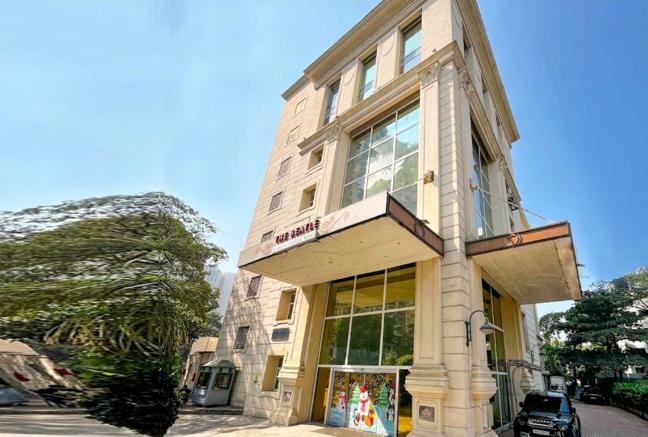








As Diwali approaches, Goa begins to glow — homes light up, markets bustle with diyas, and the celebratory spirit sets in. But with the festivities comes a sharp rise in the sale and use of firecrackers, many of which are illegal, unsafe, or environmentally hazardous. What may seem like harmless fun often results in distress, injuries, noise violations, and a serious spike in air pollution.
Firecrackers are not just a festive accessory — they are a regulated activity under Indian environmental and public safety laws. In many cases, using them irresponsibly is both a legal offence and a public health hazard.
WHAT THE LAW ACTUALLY SAYS
Firecracker use in Goa is governed by multiple laws and guidelines:
Noise Pollution (Regulation and Control) Rules, 2000: Bursting of sound-emitting firecrackers is prohibited during night time (10:00 PM to 6:00 AM) and in silence zones such as hospitals, schools, and courts. Environment (Protection) Rules, 1986 (amended in 1999): Prohibit firecrackers that generate sound levels above 125 dB(AI) or 145 dB(C) at a 4-metre distance.
Goa Government Circular – 13 September 2023: Bans firecrackers containing barium
salts and those "tied in series". It permits crackers only between 8:00 PM and 10:00 PM during Diwali and similar festivals. For New Year's Eve and Christmas, a special window of 11:55 PM to 12:30 AM is allowed.
Despite these clear rules, unlicensed sales and night-time violations continue to occur across the state. Enforcement remains a challenge — and awareness is critically low.
HEALTH HAZARDS THAT LINGER
The health risks posed by firecracker emissions are severe, especially in Goa’s high-humidity coastal air which traps pollutants for longer durations. Crackers release fine particulate matter (PM2.5 and PM10), sulphur dioxide, and heavy metals, which can:
Trigger asthma attacks, bronchitis, and respiratory infections
Cause burn injuries, particularly among unsupervised children
Irritate the eyes and throat, especially in senior citizens
According to the Central Pollution Control Board (CPCB), post-Diwali air pollution levels in urban areas across India routinely cross the "very poor" mark. Goa, while relatively greener, is not immune — Panaji and Margao
have recorded measurable spikes in PM2.5 after festival nights.
Goa’s pets and street animals are among the worst affected. Loud cracker bursts cause panic, disorientation, and trauma. Dogs often run away from their homes; cows bolt onto highways; cats go into hiding for days. Local animal shelters, including Welfare for Animals in Goa (WAG), report increased cases of injury and abandonment every Diwali.
WHAT RESPONSIBLE GOANS CAN DO
Ÿ Buy only BIS-certified “Green Crackers” (IS 17272:2023) with QR-code verification
Ÿ Follow Goa’s time restrictions: Crackers are permitted only between 8 PM and 10 PM
Ÿ Avoid crackers near hospitals, animal shelters, and old-age homes
Ÿ Never allow children to burst crackers unsupervised
Ÿ Celebrate with soundless alternatives: earthen diyas, LED lights, floral rangoli
Ÿ Report violations to local authorities or call 112 for fire-related emergencies
A FESTIVAL OF LIGHT, NOT SMOKE
Diwali represents victory of light over darkness — not noise over peace. It is entirely possible to celebrate joyously without harming the environment, our neighbours, or the animals that share our streets. Let us make this Diwali in Goa safer, quieter, and more meaningful for everyone.


A Startup’s Guide to Dilution, SAFE Notes, and Protecting Ownership
For every startup founder, deciding how much equity to part with is one of the most critical—and least reversible—decisions of the journey. Whether you are raising your first cheque, joining an accelerator, or bringing in early team members, equity is the currency you exchange for capital, expertise, and commitment.
Handled wisely, it can build momentum. Handled poorly, it can cost you control.
UNDERSTANDING EQUITY AND DILUTION
Equity represents ownership in your company. When you issue new shares to investors, advisors, or employees, your personal percentage decreases—this process is called dilution.
Dilution isn’t inherently bad; it is how companies grow. The key is ensuring that each dilution event creates greater overall value.
Example:
If you own 100�% of your startup and issue 20�% to an investor, your stake becomes 80�%. Later rounds can further reduce this
percentage. The goal is to raise enough capital to expand value faster than your ownership shrinks.
At the pre-seed or seed stage, most investors worldwide—and in India—typically seek about�10�%�to�20�% equity for their investment.
Many experienced advisors caution founders against giving up more than roughly�25�% in the very first round, as it can make later funding rounds harder.
These figures are guidelines, not rigid rules: the exact percentage depends on valuation, investor involvement, and market conditions. In emerging ecosystems such as Goa, where early-stage funding is still developing, founders should be even more strategic. Seek investors who add value through mentorship or networks, not just money.
A SAFE note—short for Simple Agreement for Future Equity—is a funding instrument created by Y�Combinator in�2013. It lets investors give money today that
converts into equity later, usually at your next priced funding round.
Key terms to understand: Valuation�Cap: the maximum valuation at which the investment converts.
Discount�Rate: the percentage reduction applied to the future valuation.
SAFEs delay dilution until conversion, but they still affect ownership later. Multiple overlapping SAFEs can add up, so maintain a clear cap-table projection showing how each one converts. Tools such as Carta, SeedLegals, or Startup�India’s free templates can help you calculate this accurately.
Raise only what you need, from people you trust, on terms you understand.
When offering equity to co-founders or early employees, align ownership with contribution. Equal splits (like�50-50) work only when both parties contribute equally and full-time. Otherwise, use vesting schedules so equity is earned over time.
Equity is not merely a slice of ownership—it is control, vision, and long-term motivation. Be generous enough to attract the right partners, but disciplined enough to protect your mission.
Every percentage point you give away today should buy growth that makes your remaining stake more valuable tomorrow.


From text to music and design — how AI is reshaping productivity
Walk into a design studio, a coder’s den, or even a writer’s workspace today, and you’ll likely find a new creative collaborator at work — not a colleague, but an algorithm.
Generative AI, once the domain of futuristic speculation, is now a mainstream force powering everything from daily emails to cinematic storyboards. It doesn't just automate tasks; it generates ideas, prototypes, and entire pieces of content.
THE MANY FACES OF GENERATIVE TECH
Generative technology refers to AI systems capable of creating content — text, images, code, audio, or video — based on user input. Tools like OpenAI’s ChatGPT (text), GitHub Copilot (code), Adobe Firefly and Midjourney (art), and Suno or Aiva (music) are revolutionizing how people across industries approach creativity and productivity. These tools use large-scale machine learning models trained on diverse datasets. GPT-4, for instance, was trained on a mixture of licensed data, publicly available content, and human feedback to deliver coherent, context-sensitive responses. GitHub Copilot leverages OpenAI Codex to assist software developers with code suggestions in real time, reducing boilerplate work and
accelerating development cycles. FROM IDEA TO EXECUTION — IN SECONDS
For marketers, writers, and content creators, generative tools act as brainstorming engines, helping craft headlines, emails, blogs, or even full reports in minutes. In the music industry, artists use AI to compose soundtracks or generate musical layers. Designers input simple prompts and receive visual assets or branding concepts that would otherwise take hours to produce. This shift doesn’t eliminate the human role — it augments it. A designer might use Midjourney for initial drafts, then refine them manually. A musician might feed an AIgenerated melody into a DAW (Digital Audio Workstation) and add live instrumentation. It’s not about replacing creativity; it’s about speeding up the journey from concept to creation.
The true power of generative AI lies in productivity. Teams now use AI to summarize long meetings, auto-generate code documentation, create dynamic slide decks, or even draft legal contracts. Generative design tools like Canva’s Magic Design or Adobe Firefly make content development accessible to non-designers, democratizing creativity.
In coding, GitHub reports that Copilot reduces coding time by nearly 55% for routine tasks, allowing developers to focus on logic and architecture. Similarly, in journalism, AI-assisted writing tools are used to produce first drafts, freeing editors to focus on accuracy and voice.
However, this wave of generative creativity raises valid concerns. Who owns AIgenerated content? Can machines plagiarize? What about deepfakes or misinformation? Legal systems worldwide are still catching up. For now, companies like OpenAI require users to follow ethical use guidelines, and tools often watermark AIgenerated content to maintain transparency.
Generative tech is not a passing trend — it’s the new baseline. As models become more multimodal (handling text, voice, video simultaneously), professionals across domains must adapt. In future workplaces, the ability to prompt and collaborate with generative tools will be as essential as typing or googling is today.
Whether you’re coding an app, designing a poster, writing a screenplay, or composing a jingle — one thing is clear: the new age of creativity is powered by code, composed with prompts, and created through collaboration between humans and machines.



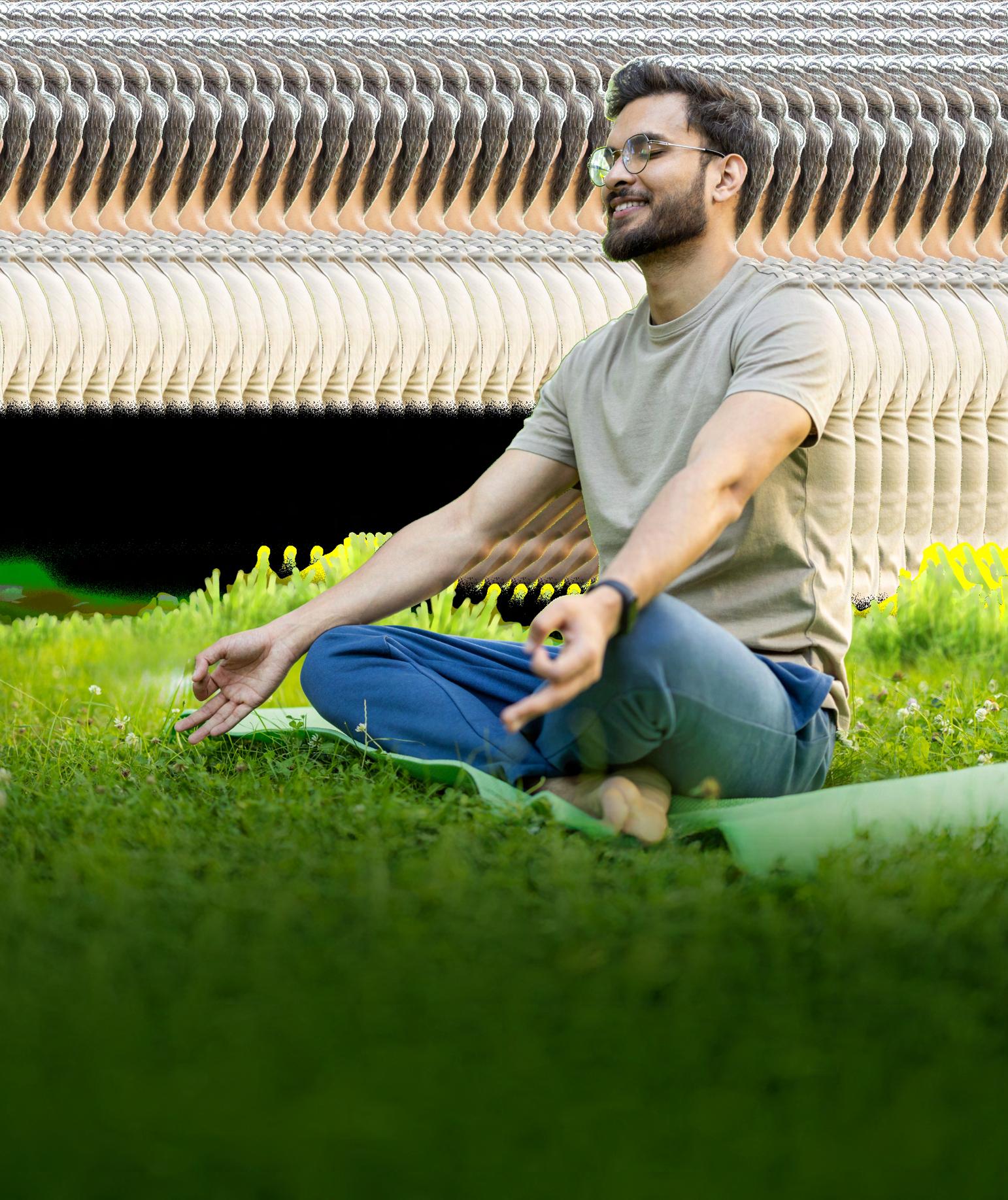

Despite a 1–2 loss, FC Goa’s spirited performance against Asian giants Al Nassr left a lasting impression.
On 22nd October at the Pandit Jawaharlal Nehru Stadium in Fatorda, FC Goa took on Saudi Arabian heavyweights Al Nassr FC in a much-anticipated AFC Champions League 2 encounter. The Goan side may have ended on the losing side with a 1–2 scoreline, but what they showed on the pitch went far beyond the final numbers — it was a night that redefined resilience, grit, and emerging talent.
The highlight for FC Goa was undoubtedly the 41st-minute strike from 24-year-old Brison Fernandes, a homegrown talent who joined the club as a teenager back in 2016. Receiving a clever pass from Dejan Drazic, Brison displayed both flair and composure, wrong-footing a defender before slotting the ball into the far corner past Al Nassr’s experienced backline. The goal not only marked FC Goa’s first in the Champions League 2 campaign, but it also came against the tournament leaders who hadn’t
conceded a single goal up to that point. Fernandes’ moment of brilliance was more than just a goal — it was a statement. Even Al Nassr’s seasoned Saudi international Abdulelah Al Amri, with over 30 national caps and World Cup experience, looked stunned by the wide forward’s execution.
Al Nassr, despite missing star striker Cristiano Ronaldo, fielded a squad rich with international pedigree and experience. The likes of Sadio Mané, João Félix, and young Brazilian Angelo Damaceno ensured the visitors dominated possession and tempo. Damaceno opened the scoring with a longrange strike in the 11th minute — a shot that FC Goa keeper Hrithik Tiwari might feel he could have handled better. Sixteen minutes later, Haroune Moussa Camara doubled the lead with a well-controlled finish after a flowing move started by Aiman Yahya. Al Nassr ended the night with a staggering 81% possession and 18 total shots — but only four of those were on target. FC Goa, by contrast, had two attempts on goal and made one count.
Despite the early setback, FC Goa’s defensive unit held firm. Led by Pol Moreno and David Timor, the team showcased tactical discipline and fearless defending. Goalkeeper Hrithik Tiwari made critical saves, while Boris Singh came close to equalizing, only to be denied by Inigo Martinez. Even after David Timor’s controversial red card for dissent in the 92nd minute, Goa kept the margin respectable.
More importantly, the team didn’t just defend — they competed. Every tackle, every block, and every clearance was a display of belief. The match also showcased coach Manolo Márquez’s strategic planning, as the squad absorbed pressure while capitalizing on counterattacking opportunities.
Though the scoreboard read 1–2, FC Goa walked away with more than just pride. They proved they could match one of Asia’s strongest clubs — man for man, move for move — with a squad built on local talent and smart international recruitment. Brison Fernandes’ goal may have lit up the night, but it was FC Goa’s collective character that truly stole the show.





In a pioneering fusion of hospitality and design innovation, Ginger, the lean-luxe brand from The Indian Hotels Company Limited (IHCL), has partnered with Asian Paints, India's leader in décor and design, for a first-ofits-kind collaboration at Ginger Goa,Candolim. Together, they have reimagined an entire floor of the property —
featuring eight exclusive rooms — under the concept “A Royale Touch”, transforming each space into a design-led, sensory experience. This partnership marks a milestone in the evolution of contemporary hospitality interiors, where texture, colour, and craftsmanship converge to redefinecomfortandcreativity. Showcasing the exquisite Asian

In a world overflowing with sugarcoated trends, Golden Chantilly stands apart — a quiet rebel redefining what dessert means. Founded in 2018 by Ericka
Fernandes, this home-grown dessert studio is less a bakery and more an intimate dialogue between flavour, emotion, and craftsmanship.
Paints Royale Play Italian Collection, the rooms bring to life rich tactile finishes and nuanced visual depth that elevate the aesthetic narrative of modern travel stays.From Canvas Dune and Corolla Curve suites inspired by natural petal formations, to the elegant Marmorino Multitone textures adorning the corridors, every detail has been curated to inspire emotionandsophistication. Finishes such as Calcecruda Mirror Stucco Paladeo Tile and Royale Glitz Reserve Luxury
Emulsion in the Fresco Calce and Stucco Poise suites lend a balance of artistry, durability, and understated glamour. Each of the eight rooms carries a distinct designstory—drawinginspiration from nature, craft, and Italian artistry — blending Asian Paints' mastery in design innovation with Ginger's signature lean-luxe ethos.
Commenting on the collaboration, both brands underscored their shared vision of creating experiences where design meets purpose, and every stay becomes a journey through texture,tone,andimagination. Guests can now book these specially designed Royale Touch rooms directly through the Ginger Hotelswebsite.
Ericka's journey didn't begin in a professional kitchen. With a background in public relations, she decided to let her passion for chocolate lead the way.
“Chocolate was my middle name,” she says with a laugh. “But it wasn't just about making desserts — it was about taking risks, experimenting with unusual combinations, and trusting my gut wheneverythingelsefailed.”
What followed were years of practice, missteps, and relentless refinement until each creation embodied her core philosophy — simplicity with intention. Every dessert at Golden Chantilly tells a story; none are told with shortcuts. The Bolo Sans Rival, somehow both feather-light and indulgently rich, and the Signature Chocolate Dome, a symphony of textures and surprises, reflect her belief that flavour should always take centre
stage.
“I'm not here for frills or flashy techniques,” Ericka says. “Golden Chantilly isn't about trends — it's about people who lose themselves in the joy of just good dessert.”
Her Classic Chocolate Cake is unapologetically dark and rich, while local cashews and handpicked nuts lend every bite depth and authenticity. There is no mass production here — only careful curationandprecision.
Golden Chantilly isn't for everyone, and that's deliberate. It's for those who recognise the difference between good and great — for those who know that true luxury lies not in glossy packaging but in the devotion behindeverywhiskandfold.
This is dessert for the discerning, the fearless, and the unapologeticallypassionate.

India's first fashion entrepreneurship reality show, Pitch To Get Rich, made a dramatic entry into the City of Joy withitsstriking“MeninBlack”prelaunch activation, turning heads and sparking conversations across Kolkata's most iconic landmarks.
In a bold visual spectacle, over 40 individuals dressed in sleek black suits and carrying gold briefcases
marked Pitch To Get Rich appeared at high-traffic locations including KC Das & Tram Depot, Hathi Bagan Market, Forum Mall, Victoria Memorial, Camac Street, Park Street, and the High Court area. The activation instantly went viral, creating a wave of intrigue and anticipation for the show's launch.
“The activation reflects the core

idea of the show — power, ambition, and opportunity,” said Sanjay Nigam, Founder of the Fashion Entrepreneur Fund and the creative force behind Pitch To Get Rich. “The briefcase represents opportunity — something everyone carries, but only afewknowhow tounlock.”
Adding to the excitement, the Kolkata and Mumbai activations also unveiled a collaboration with Mr. Golubhai Badalia, globally renowneddiamondmerchantand UHNI investor, as he steps into the fashion, investment, and entertainment space. Known for his deep expertise in diamond grading, sourcing, and design, as well as his investments across

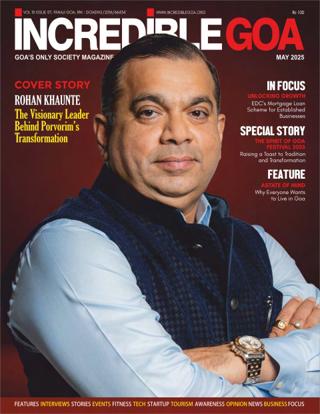
equity, AIFs, pre-REITs, and preIPOventures,Mr.Badaliajoinsthe platform as a key investor, adding unmatchedcredibilityandinsight. Pitch To Get Rich offers India's fashion entrepreneurs a once-ina-lifetime chance to pitch their ideas to leading investors and style icons. Featuring Akshay Kumar, Karan Johar, Malaika Arora, Manish Malhotra, and a panel of investors evaluating fashion-led ventures worth �40 crore, the show premiered this Diwali, 20th October, exclusively onJioHotstar.





By Norbert D’Souza

Excellentforlowerabs.
Strong abs are built with discipline, smart training, and a clean diet. Train your core with precision, fuel your body right, and the results will follow—both in performance and appearance.
The abdominal region is more thanjustthe“six-pack.”Itincludes the rectus abdominis, obliques, and transverse abdominis, all of which work together to stabilize your spine, improve posture, and support movement in every direction. Training your abs correctly isn't just for looks—it's essential for overall strength and injuryprevention.
HOW TO PERFORM ABDOMINAL EXERCISES
1.Focus on contro l, not momentum. Each rep should be slow and deliberate—squeeze yourcoreasifyou'rebracingfora punch.
2.Breathe right. Exhale while contracting the abs, inhale on the wayback.
Hang from a bar, lift legs slowly to 90°,avoidswinging.
CableCrunch
Great for resistance and upper abs.
Kneel facing a cable machine, pull rope down as you crunch your torso.
RussianTwists
Targetsobliques.
Sit with feet slightly lifted, twist from side to side holding a plate ormedicineball.
BicycleCrunch
Works upper, lower abs and obliquestogether.
Alternate elbow to opposite knee with full extension of the other leg.
AbWheelRollouts
Regular exercise strengthens yourheartandlungsanditcan strengthen bones, slowing down the process of osteoporosis. It can help you move easily by keeping your joints, tendons and ligaments more flexible. Can help you lose weight when combined with good eating habits or maintain ideal weight by burning excess calories and promotesenseofwellbeing.
3.Engage the core constantly Keep your lower back pressed to the floor (or supported if standing).
Train abs 3–4 times a week. Overtraining won't burn fat faster—qualitybeatsquantity.
MOST EFFECTIVE ABDOMINAL EXERCISES
Plank(StaticHold)
Workstheentirecore. Keep body straight from head to heels, squeeze glutes and abs. Hold30–60seconds.
HangingLegRaise
Excellent for full-range core engagement.
Roll slowly forward until body is extended, then pull back using corestrength.
Remember:youcan'tspot-reduce fat. Visible abs are made in the kitchenasmuchasinthegym.
Here'swhatreallyworks:
Calorie Control: Eat in a mild calorie deficit while keeping proteinintakehigh.
Clean Diet: Focus on lean proteins, complex carbs, healthy
fats,andplentyofwater. HIIT & Cardio: Add 3–4 sessions of high-intensity interval training orbriskcardioperweek.
Core + Compound Lifts: Squats, deadlifts, and push-ups engage thecoredeeply—don'tskipthem. Consistency: Visible results come from sustained effort, not shortcutsorcrashdiets.
FINALWORD
Strong abs are built with discipline, smart training, and a clean diet. Train your core with precision, fuel your body right, and the results will follow—both in performanceandappearance.



By CAGaurav Kenkre
Discounts have always been a tricky zone under GST — particularly post-sale discounts. The interplay of Section 15 (valuation), Section 34 (credit notes), and the rules on ITC reversal has created a web which cannot be untangled. Recent legislativedevelopmentsnowaim tosimplifythis.
1. The Section 34 Amendment –Effectivefrom1October2025
Some provisions of the Finance Act 2025 have been made effective from 1st October 2025 and one of them relates to Credit Notes. The newly inserted proviso makes it clear that a supplier can reduce output tax liability via a credit note only if the corresponding ITC, if availed, has beenreversedbytherecipient.
2. Withdrawal of the CA Certificate RequirementEffectivefrom1October2025
credit notes: used for purely commercial settlements (without touching taxable value). These areoutsideGST,andthereforeno ITC reversal is needed where there is no tax/value reduction (purely financial/commercial creditnotes)
The new provisional refund mechanism is expected to provide significant relief to manufacturers, exporters, and MSMEs where working capital gets blocked due to inverted duty structures. This reform enhances cash flow, reduces compliance burden, and strengthens ease of doing business
Last year's Circular 212/6/2024GST had created significant compliance noise. It required suppliers to obtain a CA or CMA certificate (or a declaration for small cases) from recipients confirming ITC reversal before availing tax reduction.This was never practical in large B2B networks with hundreds of customers, each needing certification.
The CBIC has now withdrawn of this circular, acknowledging its impracticality. This is a welcome move that will lighten compliance without compromising audit trails — especially as the law now directly makes ITC reversal a statutory pre-condition for reductionunderSection34.
c.In certain cases the manufacturer has some agreement with an end customer to supply goods at a discounted price Here, the manufacturer may issue commercial or financial credit notes to the dealer, enabling such dealer to provide the goods at the agreed discounted rate to the end consumer. If such a post-sale discount is given by the manufacturer to the dealer for supplying goods to the end customer at a discounted rate, it shouldbe included in the overall consideration as it is an inducementtowardsthesupplyof goods by the dealer to the end customer.
d. In certain cases, a dealer undertakes specific sales promotional activities, such as advertising campaigns, cobranding, customization services, specialsales drives, exhibition arrangements, or customer support services, etc., and such services are explicitly stated in the agreement with a clearly defined consideration payable for such a supply. In such cases, the dealer provides adistinct service to the supplier, and any “Credit notes” issued for such services, would be chargeabletoGST
specifically linking of the same with relevant invoices. This structure worked poorly in industries where discounts were determined later — for example, year-end rebates, turnover discounts,orsalesincentives. The combined effect of these reforms is clear:The government wants to tighten control over revenue leakage (ensuring ITC reversals actually happen), while simplifying compliance (by removing pre-contract and certificationhurdles).
These changes will impact how discount structures are designed and accounted for. Businesses should now, revisit discount policies — especially year-end rebate or volume-based schemes. Businesses should also classify credit notes correctly — use Section 34 notes for genuine value reduction (with ITC reversal), and use “financial” credit notes where no tax change isintended
The also need to coordinate with customers to ensure buyers reverseITCintimelymannerwhen creditnotesareissued.EvenifCA certificates are gone, businesses would be well advised to keep records of reversals and acknowledgmentsforaudit.
CA Gaurav Kenkre is a CA in practice for the last 11 years. He is a regular speaker at various professional organizations, trade bodies, MNCs and Government bodies. He also writes regularly in local as well as national publications. Besides this he holds various positions in bodies such as ICAI, GCCI, Collegebodies,Rotaryetc.
3. New CBIC Circular on PostSale Discounts – Effective 12 September2025
CBIC has also issued instructions on how to deal with different types of post-sale discounts. The core principle is distinction between:
a. Credit notes under Section 34: used to reduce the taxable value or tax. Here, the supplier can adjust output tax only if the recipientreversesITC.
b. Financial or commercial
The GST Council has also proposed an overhaul of Section 15targeting to ease the post-sale discount compliances and conditions. Since this needs an amendment to the CGST Act, which can only be done via the Budget, this change should come into effect from sometime next year.
The proposal currently is to omit the requirement of establishing the discount in terms of an agreement entered before or at the time of such supply and






By Prashant Kalra

So many realtors have gone back to the drawing board, trying to figure out a combination of old school and social media techniques to reach a wider audience of potential buyers.
There was a time when selling homesasarealtorwasallabout3 things:
Coldcalling peopleatrandom. Listing/advertising on property megasites. Networking at events to find potentialclients.
Today,thisisconsideredtheworst possibleuseofone’stimeasevery majorrealtoracrosstheworldhas weaponizedsocialmediaforlead generation. Developers too are catching on to the trend and spending huge budgets on filming, editing and social media managers.
Prashant is the founder of TPB, a boutique real estate consultancy in Goa, focussing on ultra luxury homes. He moved to Goa from Gurgaon in 2019 after his daughter developedbreathingissues.
Lookup‘GoaRealEstate’onceon Instagram and your feed will be flooded with realtors showing you plots, apartments and villas for sale. As a potential buyer, on the surface,you’respoiltforchoice.In truth, all that glitters is most certainlynotgold.
Anyone with a smartphone is making real estate content and for most buyers who don’t know anybetter,theyjudgethebookby its cover. Glitzy videos, jaw droppingdealsandtallpromises.
The ability to make great videos has masked the lack of knowledge and expertise that many of these content creators have in actual real estate transactions. Most of them are part time realtors with no credibilityorlicenses.
But, often, these realtors will achieve substantial reach and popularity, even though they are atheart,contentcreatorsandnot realtors. This rarely ends well for buyers.
Like with all sectors, social media has democratized fame. Any realtorwithagoodworkethichas the means to get his/her listing seen on social media where earlier, visibility was controlled by those who had the budget for advertising in the press, on hoardingsandmore.
The ability to get traction even as a small independent realtor has opened the doors to many young people who want to try their hand at this profession. I too started as onesuchrealtor.Whilethepathto success is long and riddled with setbacks and hardship, it is a great way to build a career as an
entrepreneur.
While the growth of the modern realtor of the back of platforms like YouTube and Instagram had a sharp growth from 2022-2024, like with many things in real estate, there seems to be a trend ofoversupply.
Frequent algorithm changes have limited the reach of many realtors to the point where their posts don’t even reach 10% of their following. There’s also a problem with some realtors buying fake followers through touts which leads to an inflated follower count but low engagement as fake followers don’t react to content.
So many realtors have gone back to the drawing board, trying to figure out a combination of old school and social media techniques to reach a wider audienceofpotentialbuyers. Because like all things in the world,realestateisnotstatic.The sector and those who depend on it must continue to evolve, or riskingbecomingobsolete.


In the heart of every Goan kitchen lies a small, deep-purple fruit that seldom finds its way to supermarket shelves yet rules home kitchens across the Konkan —kokum(Garciniaindica).Loved for its sharp tang and natural freshness, kokum is much more than a souring agent; it’s a timehonoured fruit with proven antioxidant compounds and deep roots in traditional Goan life.
1. Morning Refreshing Drink
Soak 3–4 dried kokum rinds in warm water overnight. Sip it in the morning as a light, tangy digestive — a traditional Goan practice believed to refresh the body and support digestion naturally.
2. Post-Meal Soother
After a heavy lunch, sip kokum water with a pinch of black salt.This age-old home remedy is said to help ease bloating and acidity, though it’s best viewed as a gentle digestive drink rather than a substitute for prescribed antacids.
3. Culinary Balance
Add a few kokum petals to fish curries or lentils for natural tartness. Kokum’s organic acids may mildly influence fat metabolism, but this is based on early-stage research — its real benefit lies in adding flavour and balance to coastal dishes.
4. Summer Cooler
Blend kokum syrup with chilled water for a refreshing summer drink that locals have long used to beat the Goan heat. While it’s not medically proven to prevent heat exhaustion, it’s a delicious, hydrating alternative to packaged soft drinks.
5.Antioxidant Goodness
Rich in natural pigments and polyphenols, kokum contains antioxidants that help neutralize free radicals in laboratory studies. Regular inclusion in meals or drinks contributes to overall wellness and is traditionally associated with clear, healthy skin.
TheCoastalCoolant
When Goa’s heat rises and humiditythickens,fewthingsfeel as comforting as a chilled glass ofsolkadhi.Thistangypinkdrink, made by blending kokum extract with coconut milk, has been enjoyed for generations to refreshandsoothethebody.
Kokum rind contains organic acids and natural pigments (notably anthocyanins) with antioxidant potential, which may explain its traditional use as a “cooling” food. While science hasn’tyetconfirmedeffectssuch as hydration or electrolyte restoration, its long-standing role as a summer coolant and digestive companion remains well supported by cultural practice.
TraditionalDigestiveAid
Goans have long used kokum after meals to ease a heavy stomach. Its gentle acidity helps stimulate appetite and supports digestion—aroleacknowledged in both folk use and Ayurveda. Early studies show kokum’s extracts possess mild antiinflammatory and digestivesupporting properties, though not enough to treat acidity or reflux in medical terms. Enjoyed assolkadhi,sherbet,orincurries,
kokum’s digestive benefits remain more culinary than pharmaceutical — safe, soothing,andentirelynatural.
HeartandAntioxidantHealth
Kokum’s deep red rind owes its colour to anthocyanins, powerful natural antioxidants that help neutralize free radicals in the body. It also contains hydroxycitric acid (HCA), a compound studied in other Garciniaspeciesforitsroleinfat metabolism. While kokum’s HCA content is modest and evidence for cholesterol-lowering or fatburning effects in humans is limited, incorporating it in moderation contributes to a balanced, antioxidant-rich diet —asimplewaytosupportoverall wellness without overstating medicalclaims.
Ayurvedic and Cultural Significance
In Ayurveda, ripe kokum is consideredsheetal(cooling)and helps balance excess pitta — especially useful in hot, humid climates. The unripe fruit, however, can be mildly pittaincreasing, highlighting the importance of ripeness and moderation. Traditionally, kokum is also valued for soothing the skin, relieving fatigue, and refreshing the system — benefits rooted in experience rather than laboratory proof but fully in tune withlocalwisdom.
Heritage Fruit for Modern Times
At a time when global “superfoods” dominate store shelves, kokum stands out as Goa’sown—local,seasonal,and sustainable. Rich in natural pigments, tang, and tradition, it embodies everything modern nutrition now celebrates: plantbased goodness, minimal processing, and regional authenticity.
So, the next time you sip sol kadhi, remember — it isn’t just a drink. It’s centuries of Goan wisdom, bottled in one tangy, ruby-redglass.

WEBSITE
SINCE2014














